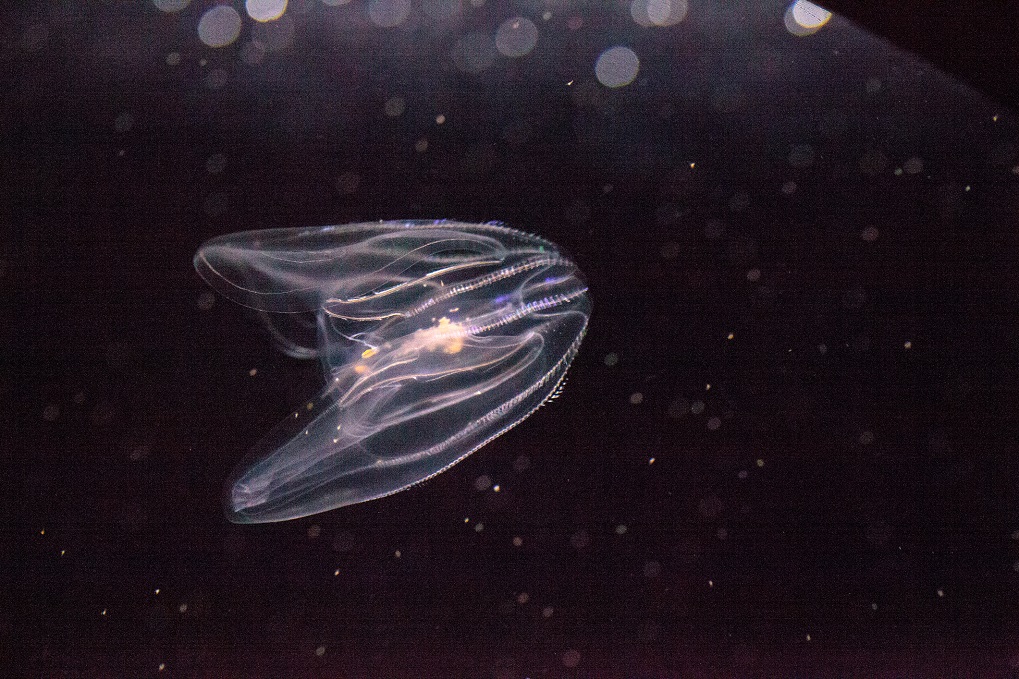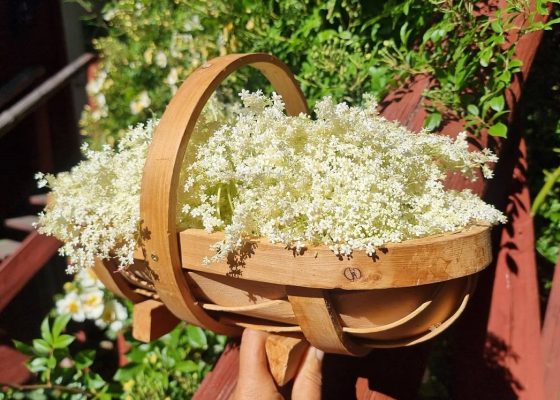
By Josh Longster
In the world of marine biology, the comb jelly, a translucent, gelatinous creature, has long intrigued scientists with its bizarre and remarkable abilities. These animals, part of the phylum Ctenophora, have captivated researchers due to their unusual behaviors, from the ability to fuse with other individuals to their seemingly miraculous capacity to reverse aging under certain conditions. Recent discoveries have shed light on the extraordinary life-cycle flexibility of these creatures, unveiling not only their survival mechanisms but also raising questions about their potential for regenerative medicine.
Two Become One
One of the comb jellies’ most surprising talents is their capacity to fuse with other jellies, effectively becoming one organism. This phenomenon was first discovered by biologist Kei Jokura and his team. Jokura, who was conducting research on comb jellies, initially observed a particularly unusual specimen—a jelly that appeared to have two heads, two mouths, and two anuses. Upon closer inspection, it became evident that two individual comb jellies had fused together, creating a single, functioning organism.
This discovery led the researchers to experiment further, deliberately slicing comb jellies and placing them near one another. To their amazement, the jellies fused almost 90% of the time. The resulting fused creature shared a nervous system and coordinated its movements as one entity. The team’s experiments with feeding also demonstrated the depth of this fusion. When one jelly consumed brine shrimp, the food passed through both jellies’ digestive systems, with one jelly excreting the waste. This cooperation between fused individuals suggests that the creatures are not just physically connected, but neurologically linked as well, behaving as a unified organism despite having started as separate beings.
Turning Back the Clock
While fusion is an incredible survival tactic, comb jellies possess another remarkable skill: the ability to reverse their aging process. Known for their regenerative properties, comb jellies can, under certain conditions of stress, transform from an adult back into a juvenile state—a phenomenon that had previously only been observed in few creatures in the animal kingdom like the “immortal jellyfish” Turritopsis dohrnii. Recent studies have confirmed that the Atlantic comb jelly, Mnemiopsis leidyi, or the sea walnut, can undergo a similar reverse-aging process.
This discovery, made by marine biologists Joan Soto-Angel and Pawel Burkhardt at the University of Bergen, involved exposing adult comb jellies to environmental stressors like starvation and physical injury. Under these conditions, the adult jellies would shrink and revert to a larval form. The researchers found that the jellies not only regressed morphologically but also exhibited feeding behaviors typical of their earlier life stages. This “time-travel-like” metamorphosis allowed the comb jellies to survive by accessing food sources that were unavailable to their adult forms.
This process did not require a complete breakdown of the jelly’s cellular structure, like the one seen in the immortal jellyfish. Instead, the sea walnut maintained its identity and simply reshaped its morphology, shedding its adult characteristics in favor of a more primitive, larval body. The ability to regress in response to stress offers the comb jelly a significant survival advantage, allowing it to adapt to harsh conditions and avoid the dangers of aging and starvation.
Comb Jellies’ Unique Life-Cycle Plasticity
The life-cycle plasticity of comb jellies has deep evolutionary implications. Mnemiopsis leidyi, one of the earliest animal lineages, exhibits this extraordinary capacity for developmental flexibility. Researchers suggest that this ability may have evolved as a survival mechanism in response to fluctuating environmental conditions, offering the comb jelly a means of ensuring its survival when food is scarce or when the species faces other environmental pressures.
Moreover, this ability to reverse aging and fuse with other individuals may explain its invasive success across the world’s waters. Known to invade new ecosystems via ships’ ballast water, this comb jelly has spread across the Black and Caspian Seas, outcompeting native species and disrupting local fisheries. Its resilience, fueled by its regenerative abilities, has allowed it to thrive in a wide range of environments, making it a highly adaptable species.
Implications for Regenerative Medicine
The findings surrounding comb jellies are not just important for understanding marine life—they also hold promise for the future of regenerative medicine. The comb jellies’ capacity to fuse and heal their bodies, as well as to reverse aging, could provide valuable insights into how we might apply similar principles to human health.
Allison Edgar, an integrative biologist at the New Jersey Institute of Technology, has expressed excitement about the potential applications of this research for humans. She notes that if the regenerative abilities of comb jellies could be harnessed, they might one day offer solutions to organ transplants, allowing patients to heal quickly and fully integrate transplanted organs without rejection. The rapid merging of nervous systems in fused comb jellies could also inspire methods for regrowing or reattaching limbs, helping individuals regain full control over transplanted or prosthetic limbs.
While such advances are still a long way off, the ability to regenerate and adapt offers a glimpse into a future where human healing might mirror the biological resilience observed in these fascinating creatures.
The world of comb jellies will be one of continuous discovery, and as researchers continue to explore their mysterious biology, the possibilities seem endless.
We wish this gifted discovery would not explode again human’s greedy leading destroy and enslave this enduring creature by capturing and killing comb jellies to achieve their own impossibles.









Cancel anytime


Using our website
You may use the The Middle Land website subject to the Terms and Conditions set out on this page. Visit this page regularly to check the latest Terms and Conditions. Access and use of this site constitutes your acceptance of the Terms and Conditions in-force at the time of use.
Intellectual property
Names, images and logos displayed on this site that identify The Middle Land are the intellectual property of New San Cai Inc. Copying any of this material is not permitted without prior written approval from the owner of the relevant intellectual property rights.
Requests for such approval should be directed to the competition committee.
Please provide details of your intended use of the relevant material and include your contact details including name, address, telephone number, fax number and email.
Linking policy
You do not have to ask permission to link directly to pages hosted on this website. However, we do not permit our pages to be loaded directly into frames on your website. Our pages must load into the user’s entire window.
The Middle Land is not responsible for the contents or reliability of any site to which it is hyperlinked and does not necessarily endorse the views expressed within them. Linking to or from this site should not be taken as endorsement of any kind. We cannot guarantee that these links will work all the time and have no control over the availability of the linked pages.
Submissions
All information, data, text, graphics or any other materials whatsoever uploaded or transmitted by you is your sole responsibility. This means that you are entirely responsible for all content you upload, post, email or otherwise transmit to the The Middle Land website.
Virus protection
We make every effort to check and test material at all stages of production. It is always recommended to run an anti-virus program on all material downloaded from the Internet. We cannot accept any responsibility for any loss, disruption or damage to your data or computer system, which may occur while using material derived from this website.
Disclaimer
The website is provided ‘as is’, without any representation or endorsement made, and without warranty of any kind whether express or implied.
Your use of any information or materials on this website is entirely at your own risk, for which we shall not be liable. It is your responsibility to ensure any products, services or information available through this website meet your specific requirements.
We do not warrant the operation of this site will be uninterrupted or error free, that defects will be corrected, or that this site or the server that makes it available are free of viruses or represent the full functionality, accuracy and reliability of the materials. In no event will we be liable for any loss or damage including, without limitation, loss of profits, indirect or consequential loss or damage, or any loss or damages whatsoever arising from the use, or loss of data, arising out of – or in connection with – the use of this website.
Last Updated: September 11, 2024
New San Cai Inc. (hereinafter “The Middle Land,” “we,” “us,” or “our”) owns and operates www.themiddleland.com, its affiliated websites and applications (our “Sites”), and provides related products, services, newsletters, and other offerings (together with the Sites, our “Services”) to art lovers and visitors around the world.
This Privacy Policy (the “Policy”) is intended to provide you with information on how we collect, use, and share your personal data. We process personal data from visitors of our Sites, users of our Services, readers or bloggers (collectively, “you” or “your”). Personal data is any information about you. This Policy also describes your choices regarding use, access, and correction of your personal information.
If after reading this Policy you have additional questions or would like further information, please email at middleland@protonmail.com.
PERSONAL DATA WE COLLECT AND HOW WE USE IT
We collect and process personal data only for lawful reasons, such as our legitimate business interests, your consent, or to fulfill our legal or contractual obligations.
Information You Provide to Us
Most of the information Join Talents collects is provided by you voluntarily while using our Services. We do not request highly sensitive data, such as health or medical information, racial or ethnic origin, political opinions, religious or philosophical beliefs, trade union membership, etc. and we ask that you refrain from sending us any such information.
Here are the types of personal data that you voluntarily provide to us:
As a registered users or customers, you may ask us to review or retrieve emails sent to your business. We will access these emails to provide these services for you.
We use the personal data you provide to us for the following business purposes:
Information Obtained from Third-Party Sources
We collect and publish biographical and other information about users, which we use to promote the articles and our bloggers who use our sites. If you provide personal information about others, or if others give us your information, we will only use that information for the specific reason for which it was provided.
Information We Collect by Automated Means
Log Files
The site uses your IP address to help diagnose server problems, and to administer our website. We use your IP addresses to analyze trends and gather broad demographic information for aggregate use.
Every time you access our Site, some data is temporarily stored and processed in a log file, such as your IP addresses, the browser types, the operating systems, the recalled page, or the date and time of the recall. This data is only evaluated for statistical purposes, such as to help us diagnose problems with our servers, to administer our sites, or to improve our Services.
Do Not Track
Your browser or device may include “Do Not Track” functionality. Our information collection and disclosure practices, and the choices that we provide to customers, will continue to operate as described in this Privacy Policy, whether or not a “Do Not Track” signal is received.
HOW WE SHARE YOUR INFORMATION
We may share your personal data with third parties only in the ways that are described in this Privacy Policy. We do not sell, rent, or lease your personal data to third parties, and We does not transfer your personal data to third parties for their direct marketing purposes.
We may share your personal data with third parties as follows:
There may be other instances where we share your personal data with third parties based on your consent.
HOW WE STORE AND SECURE YOUR INFORMATION
We retain your information for as long as your account is active or as needed to provide you Services. If you wish to cancel your account, please contact us middleland@protonmail.com. We will retain and use your personal data as necessary to comply with legal obligations, resolve disputes, and enforce our agreements.
All you and our data are stored in the server in the United States, we do not sales or transfer your personal data to the third party. All information you provide is stored on a secure server, and we generally accepted industry standards to protect the personal data we process both during transmission and once received.
YOUR RIGHTS/OPT OUT
You may correct, update, amend, delete/remove, or deactivate your account and personal data by making the change on your Blog on www.themiddleland.com or by emailing middleland@protonmail.com. We will respond to your request within a reasonable timeframe.
You may choose to stop receiving Join Talents newsletters or marketing emails at any time by following the unsubscribe instructions included in those communications, or you can email us at middleland@protonmail.com
LINKS TO OTHER WEBSITES
The Middle Land include links to other websites whose privacy practices may differ from that of ours. If you submit personal data to any of those sites, your information is governed by their privacy statements. We encourage you to carefully read the Privacy Policy of any website you visit.
NOTE TO PARENTS OR GUARDIANS
Our Services are not intended for use by children, and we do not knowingly or intentionally solicit data from or market to children under the age of 18. We reserve the right to delete the child’s information and the child’s registration on the Sites.
PRIVACY POLICY CHANGES
We may update this Privacy Policy to reflect changes to our personal data processing practices. If any material changes are made, we will notify you on the Sites prior to the change becoming effective. You are encouraged to periodically review this Policy.
HOW TO CONTACT US
If you have any questions about our Privacy Policy, please email middleland@protonmail.com
The Michelin brothers created the guide, which included information like maps, car mechanics listings, hotels and petrol stations across France to spur demand.
The guide began to award stars to fine dining restaurants in 1926.
At first, they offered just one star, the concept was expanded in 1931 to include one, two and three stars. One star establishments represent a “very good restaurant in its category”. Two honour “excellent cooking, worth a detour” and three reward “exceptional cuisine, worth a
Thank you for your participation,
please Log in or Sign up to Vote

123Sign in to your account